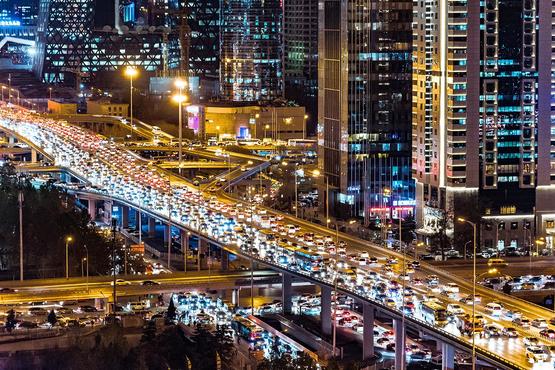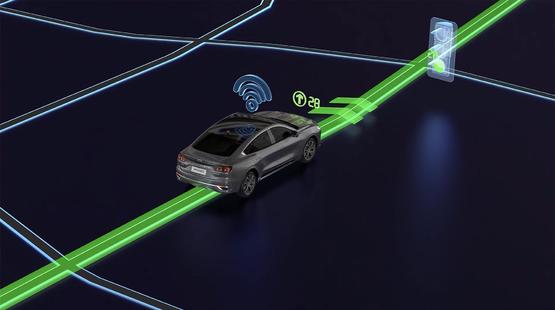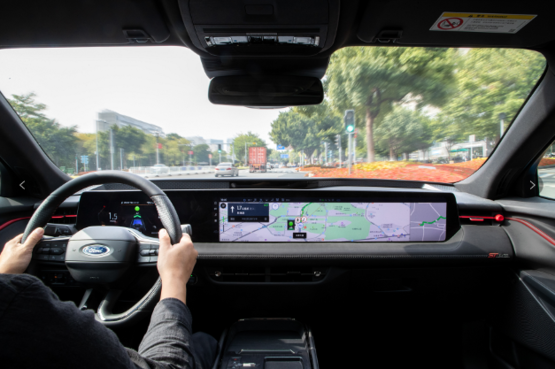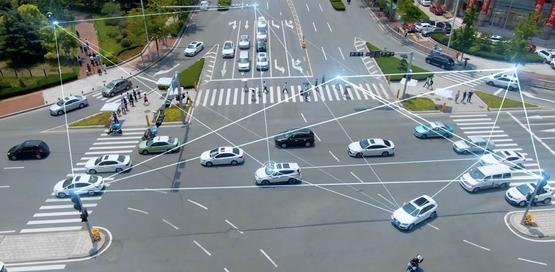As of the end of March 2022, there are seven cities with more than 4 million vehicles in the country, namely Beijing, Chengdu, Chongqing, Suzhou, Shanghai, Zhengzhou, and Xi’an[1]. In cities with larger car ownership, the phenomenon of traffic jams is more obvious. Among them, parking delays and queuing at signal-controlled intersections (referred to as “signal-controlled intersections”) are one of the most common causes of congestion. The headache of “waiting for the light” problem.
I believe that many car owners have had this experience. Once they encounter a red light at a certain intersection, it is like being hit by the “red light curse”. Almost every intersection behind will encounter a red light, and at least one-third of the road will be red. time to wait for the lights. According to relevant statistics, in the above-mentioned seven “blocked cities”, the average time of waiting for lights at intersections (the delay time for parking at signal-controlled intersections) exceeds 30 seconds, and the average queue length of vehicles waiting for lights at intersections exceeds 100 meters. Among them, the queues for red light vehicles at intersections in Xi’an are the longest, and the average length of queues at the intersections in the morning and evening peaks reached 141 meters, and the average waiting time for lights at the most congested intersections exceeded 2 minutes. [2]
 Parking delays and queues at signal-controlled intersections are one of the most common causes of congestion
Parking delays and queues at signal-controlled intersections are one of the most common causes of congestion
To solve the problem of road congestion and make “not waiting for lights” a reality, the key is to open up the interconnection between vehicles and roads, and realize the large-scale application of vehicle-road coordination technology, which is also a key element to promote urban smart transportation. In January 2022, the State Council issued the “14th Five-Year Plan” Modern Comprehensive Transportation System Development Plan, which made top-level design and system deployment for the construction of a modern comprehensive transportation system during the “14th Five-Year Plan” period. The application of intelligent technologies will be in-depth promoted, and travel services such as autonomous driving and vehicle-road coordination will be steadily developed.
As an advanced vehicle wireless communication technology, vehicle-road collaboration technology (also known as “cellular vehicle networking”, referred to as “C-V2X”) can enable vehicle-to-vehicle (V2V), vehicle-to-intelligent infrastructure (V2I), vehicle-to-vehicle Have “real-time conversations” with people (V2P). Vehicles equipped with vehicle-road coordination can receive road traffic information ahead and predict risks beyond the sensor range, thereby helping vehicle owners avoid congestion, reduce the risk of collisions and red light running, and improve overall traffic efficiency.
Ford is the first vehicle company in the industry to mass-produce the vehicle-road collaboration system. Since January 1 , 2021 , the vehicle-road collaboration system has been officially applied to mass-produced models . It has received nearly 10,000 applications from car owners and has more than 2,000 monthly active users . The system is based on the communication mode of the existing commercial 4G cellular network, through the interconnection between vehicles, intelligent infrastructure and urban traffic cloud control platform, that is, “vehicle-road-cloud” two-way communication, to timely push forward traffic information for vehicle owners , so that car owners can grasp the signal lights, green wave speed and road traffic conditions in real time, plan the speed and route in advance, and effectively improve travel efficiency and driving safety.
 Ford Vehicle-Road Synergy gives owners real-time visibility into traffic lights, green wave speeds, and road traffic conditions
Ford Vehicle-Road Synergy gives owners real-time visibility into traffic lights, green wave speeds, and road traffic conditions
The continuous expansion of coverage accelerates the realization of the dream of “ unequal lights “
At present, Ford’s vehicle-road coordination system has covered 240 intersections in Wuxi, Jiangsu, 119 intersections in Changsha, Hunan, and 100 intersections in Huangpu District, Guangzhou. Both the coverage and the number of intersections covered are in a leading position in the industry . With the advancement of the intelligent transformation of local urban roads, the coverage of Ford’s vehicle-road coordination system is also expanding. Soon, Ford’s vehicle-road coordination system will soon be settled in the first city in China with more than 4 million cars.
 While the coverage of cities is increasing, the number of Ford models that support vehicle-road coordination is also increasing.
While the coverage of cities is increasing, the number of Ford models that support vehicle-road coordination is also increasing.
At the same time, the number of Ford models that support vehicle-road coordination is also increasing. Currently, the new- generation Mondeo, the new-generation Ford F-150 Raptor, the Mustang Mach-E , the Ford EVOS , the Edge Plus and the new Explorer are all on the six models. The vehicle-road coordination system is standard , and car owners can iteratively upgrade through OTA without adding any hardware, and experience the smart travel mode of connecting people, vehicles and cities with a wider and wider range for free.
 The number of Ford models that support vehicle-road collaboration is also increasing
The number of Ford models that support vehicle-road collaboration is also increasing
To truly realize unequal lights, build “people, vehicles, roads, clouds, and networks” collaborative capabilities, and realize smart transportation, it is obviously not enough to rely on the efforts of one car company. Currently, Ford is actively promoting the participation of more industry partners, continuously expanding the application scenarios and cities of vehicle-road collaboration, so that more users can realize the social value and future prospects of vehicle-road collaboration. In addition, with the participation of many industry partners and the expansion of coverage, vehicle-road collaboration will effectively help vehicles to upgrade their capabilities in environmental perception, computational decision-making, and control execution, and become an important aid for L4 autonomous driving. “The ideal shines into reality.
 Vehicle-road collaboration will effectively help vehicles upgrade their capabilities in environmental perception, computational decision-making, and control execution.
Vehicle-road collaboration will effectively help vehicles upgrade their capabilities in environmental perception, computational decision-making, and control execution.
[1] Data source: China Government Network. https://ift.tt/wiclyfY
[2] Data source: AutoNavi Map “Traffic Analysis Report of China’s Major Cities in the Third Quarter of 2020” http://www.199it.com/archives/1154072.html
This article is reproduced from: http://www.guokr.com/article/461616/
This site is for inclusion only, and the copyright belongs to the original author.